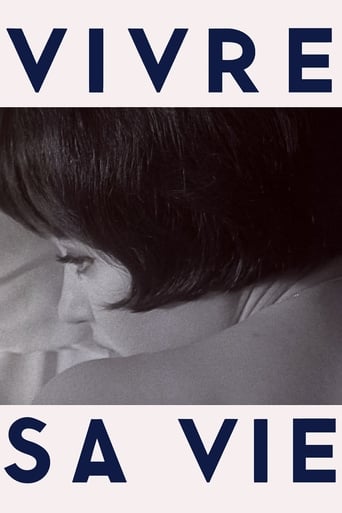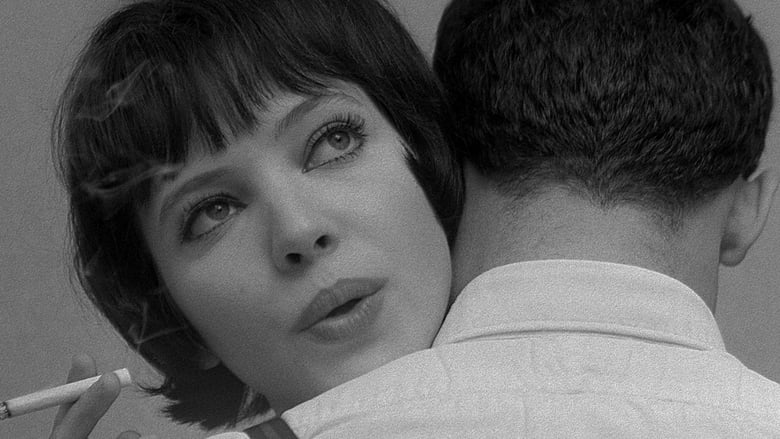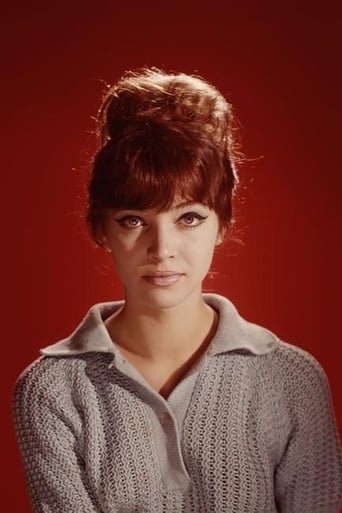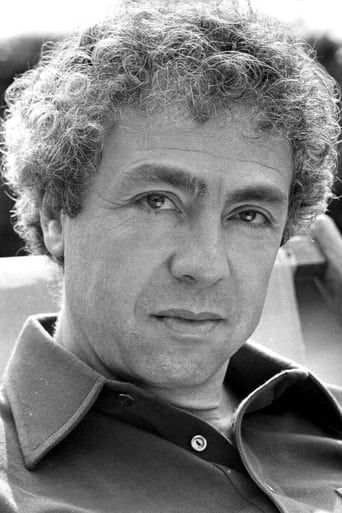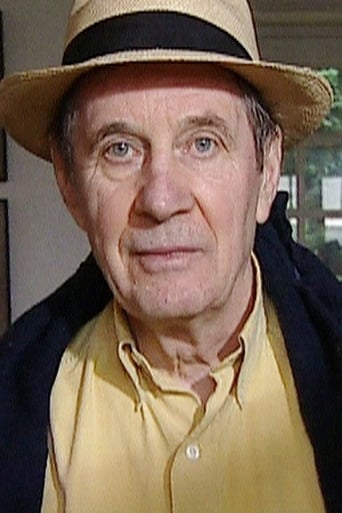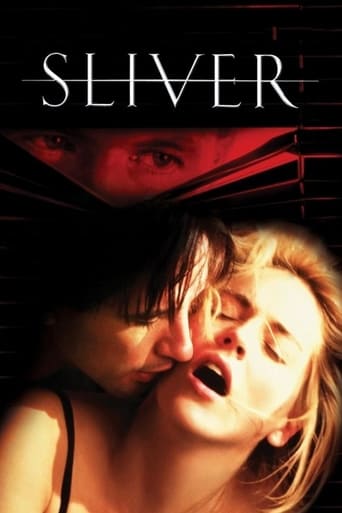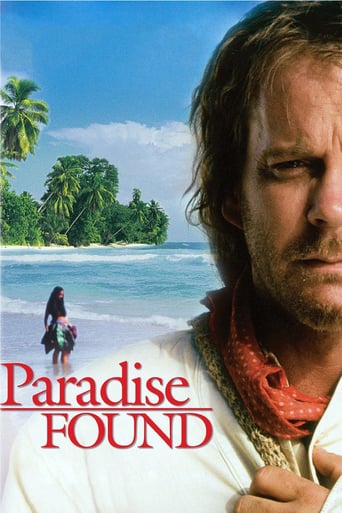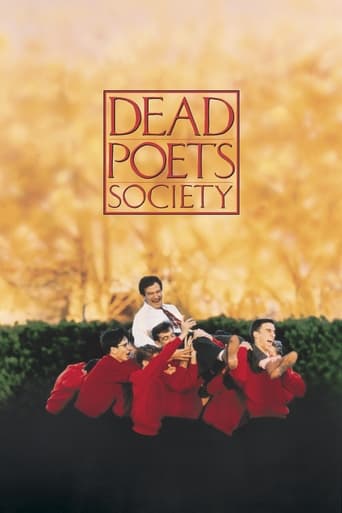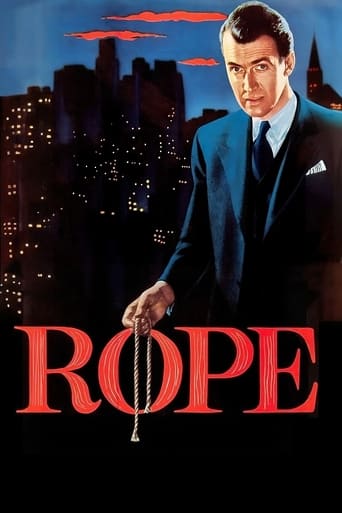Vivre Sa Vie (2006)
Twelve episodic tales in the life of a Parisian woman and her slow descent into prostitution.
Watch Trailer
Cast


Similar titles
Reviews
You won't be disappointed!
There are better movies of two hours length. I loved the actress'performance.
The plot isn't so bad, but the pace of storytelling is too slow which makes people bored. Certain moments are so obvious and unnecessary for the main plot. I would've fast-forwarded those moments if it was an online streaming. The ending looks like implying a sequel, not sure if this movie will get one
There are moments that feel comical, some horrific, and some downright inspiring but the tonal shifts hardly matter as the end results come to a film that's perfect for this time.
Jean-Luc Godard directs "My Life to Live" (1962). The film opens with a dedication to B movies, and so underdogs. Godard then hits us with a quote by philosopher Michel de Montaigne ("Lend yourself to others, but give yourself to yourself"), the importance of which becomes apparent later on."Life's" first moving images consist of close-ups of actress Anna Karina. These shots, which survey Anna's skull from the front and sides, are all truncated and prematurely silenced. Only when Anna is viewed from behind, her face hidden, does Godard's film finally proceed. The message is subtle: only when her private wants are denied, does this character's life unfold.Anna plays Nana, a young woman living in Paris. Poor, lonely and seeking escape, Nana allows herself to be seduced by a post-war France awash with money, billboards and glitzy cinema screens. The world will allow her to become an actress, Nana believes. And all will be fine.But Godard counters Nana's naivety. When Nana insists that humans have free will ("I raise my hand, I'm responsible!"), Godard slyly admonishes her with a parable about a chicken whose soul is revealed to be on the outside of its body. Behaviour, personality and human actions, then, are contingent upon the External. And the External, for a staunch Marxist like Godard, is shaped by economic systems.And so Nana is pushed into prostitution. She insists that this is a personal choice not influenced by economic and sexual shackles, a stance which immediately makes the ironically titled "My Life to Live" different from most films "about prostitution". For whilst most films simply pity prostitutes, Godard focuses on their complicity; they embrace their exploitation, deny that exploitation is even taking place, and believe themselves to be making rational career choices. Such are common beliefs under capitalism (the poor choose to be poor, the worker is free to choose his employer etc etc), which for Godard merely legitimise systems of abuse. Montaigne's command - "Lend yourself to others, but give yourself to yourself" - is thus seen to be an impossibility. The brain and body one gets back at the end of the day have already been irrevocably changed and colonised by the customer and employer. And with these changes, one's potentials are potentially stymied."My Life to Live" is filled with symbolism, clever juxtapositions and Brechtian techniques. Pin-ball machines, for example, point to both a cruelly deterministic universe and Nana's role as a money-for-pleasure dispensation unit. Elsewhere Nana watches Dreyer's "The Passion of Joan of Arc", a film in which a True Believer is crushed by patriarchal forces beyond her control. Godard uses the nature of Dreyer's film - silent cinema - as a comment on Nana's forced passivity, her exploitation, her misguided faith and ultimately her sacrifice. Another scene watches as Nana sits in a cafe observing happy couples as Jean Ferrat sings "Ma Mome". The song's about a lovely loser who is adored despite her failings. Godard's camera makes love to Nana's face and eyes as the song unfolds, a bit of tragic romanticism which climaxes when Nana uses the moment to "wilfully decide" to become a prostitute.Juxtapositions abound. One segment portrays Nana happy and in love with her new life as a prostitute. The following segment abruptly shows the opposite. Nana herself embodies duelling qualities. Simply for being human, Godard treats Nana as a work of art, something lovely and precious and special and worthy of exaltation and love. Nana is herself aware of her exhibitionist situation, constantly posing, teasing and eyeballing Godard's camera. But when a character reads a poem (Poe's "The Oval Portrait"), such adoration turns sour. The poem is about a lovely head which dies when an artist fixates on a replicated image of it rather than the real thing. Privileging fantasy, then, leads to various forms of neglect and abuse.Late in the film Nana meets a philosophical man in a cafe. He tells her that thinking leads to analysis paralysis and so an inability to quickly act. To mitigate suffering caused by inaction, humans are thus "predisposed to not think". This survival mechanism, the man argues, makes humans susceptible and blind to elaborate forms of exploitation. Language, a kind of lie, propagates these problems. Only by adopting a dispassionate and honest view of reality, the man implies, can human language and so behaviour become honest (and by extension capable of love in a humanitarian sense).Like Godard's "Breathless", "Life" ends with a parody of Old Hollywood gangster movies; Nana is comically gunned down and gets the Hollywood career she always dreamed of. The film's obsession with prostitution echoes Godard's other films, most of which see capitalism as being built upon meretriciousness. For Godard, we're all prostitutes, selling our bodies and our minds which, as Cartesian mind/body splits are a fallacy, ultimately amounts to the same thing anyway. Where "My Life" differs from these films is in its dry, almost bureaucratic portrayal of prostitution; sex as banal, state sanctioned, "humanely regulated" economic transactions.Aesthetically, "Life" is special. The film's mixture of avant-gardism and classical formalism (Godard uses heavy cameras and lots of dollies) is emblematic of the entire Modernist movement (Antonioni, Bergman, Pasolini, Kubrick, Herzog, Bresson, Fassbinder etc), cinema's greatest movement before its defeat by algorithms and banks. Fittingly, Godard, relative to wealthy bankers, once hoped to study anthropology. His film would prove an influence on directors like Scorsese and Tarantino, who'd steal its style but whitewash its politics, a kind of selective vampirism which would eventually kill the Modernist movement outright. The film finds Karina doing some of her best work; warm, tragic and never melodramatic (Godard's style undercuts melodrama). Little touches, such as Nana measuring herself with one hand or playfully dancing around a jukebox, show us the Nana that might have been.8.9/10 – Masterpiece.
Now who doesn't enjoy a healthy dose of French, 'Nouvelle Vague' existentialism on a rainy Sunday afternoon? Well, I must confess I was initially a little apprehensive about 'Vivre sa Vie', a twelve tableaux, New Wave film directed by Jean-Luc Godard. Not that I haven't immensely enjoyed many of his other works but the write up on the DVD made it sound far more inaccessible and 'out there' than it actually was. The use of tableaux helped tremendously with the flow and understanding and gave the movie the effect of being more like a play whilst providing a direct view into the mind's eye of the filmmaker.Vivre sa Vie is certainly less plot driven than character driven - but what do you expect? This is French New Wave people! Essentially one becomes immersed in the life and lifestyle, thoughts, feelings and attitudes of Nana Kleinfrankenheim (played excellently by Anna Karina); a young woman who has left an unhappy marriage, and her child, and is seeking more in life. Apparently Godard specifically chose Karina for his main character believing her lack of acting experience would contribute to her natural 'awkwardness; it did, and very effectively too. Nana is dissatisfied with her lot and aspires to become an actress as she works, with extreme indifference, in a low paid sales position. She finds herself without enough money to make ends meet and that is where her descent into a seedier, harder life begins. Throughout the movie, Nana's personality vacillates wildly between apathy, coquettishness, genuine sadness, sultriness, sheer awkwardness and hard-nosed conviction. I particularly enjoyed the tableaux where she meets an older man in a café and they start a conversation which leads to philosophical enquiry. Although Nana has no knowledge of the subject, her enquiries and questions lead to her philosophizing, albeit for a brief period of time. This is one of the rare scenes where Nana becomes genuinely animated and exuberant and one sees that she is truly an innocent, whose various 'masks' are just that; a way of appearing that she has her life together, knows what she's doing and doesn't care about the consequences.The cinematography and atmosphere of sa Vie is beautiful, brooding and captivating; some scenes consisting solely of the back of peoples' heads, their reflections in mirrors and their thoughts only spoken in their heads. If you fancy stepping back in time to 1960s Paris, where everyone is impeccably chic all the time, where people seemingly inhale more smoke than oxygen and where one can revel in a fiesta of ennui, seediness, desperation, innocence and stark realism - then you are going to love this movie!
Vivre Sa Vie (1962)*** (out of 4) Jean-Luc Godard's tale of a young woman named Nana (Anna Karina) who slowly finds her desperate situation in life turning her towards prostitution to make some money. Once you see Godard's name then you know we're not going to get a straight story of a woman entertaining prostitution. Instead, the film is told in twelve chapters that really play out more like vignettes than anything else but I think this actually helps the film in a few ways. I've been quite critical with the director and several of his films but I think that style of his really doesn't go over-the-top here and for the most part it works. This is especially true in the first couple chapters where we see the woman's desperate situation and how she keeps waiting for a break to happen but of course it never comes. Godard's style of storytelling also works beautifully during a sequence where the woman is given all the information and rules about being a prostitute. This sequence here is perhaps one of my favorites from any Godard film I've seen up to this point. With that said, I found the final two chapters to be rather boring and to me they simply didn't fit in with the rest of the movie. I don't mind how the picture ended but chapter eleven takes place in a restaurant and has the woman talking to an older man. I'm sure some will get something out of this conversation but it just left me flat. I think the best thing working here is the performance of Karina who is simply divine in the lead role. It's hard to work your way through the director's style but Karina makes for a very believable role and actually makes you care about this woman and the trouble she's in. VIVRE SA VIE isn't something that I found to be a masterpiece but it is one of the better films I've seen from Godard.
So far in my exploration of Jean-Luc Godard I have remained in his masterful decade of the '60s, and as a result I've been treated mostly to films that are fun and exciting, toying with structure and cinematic conventions. Vivre Sa Vie fits firmly in his career, but it's also a surprising contrast to his other work which I have seen so far. Even in his more narratively focused Breathless, there's still a very cinematic quality to it, portraying a sense of freedom of expression and romanticism. Vivre Sa Vie strips away all of that and elects instead to present an almost documentarian look into the descent of the young Nana (Anna Karina, naturally) into prostitution.The structure of the film is split into twelve episodes that bring us through Nana's progression. She's a young Parisian girl working at a record shop who wants to be in the movies, but needs money to pay her rent. It's a simple story, but the way Godard tells it is what makes it so intriguing. He presents Nana as an object of desire to many but an object of interest to very few. The men around her aren't interested in what she has to say, they put up with her words in order to get to what they are really looking for, her body and ways to profit off of it.Karina's dance scene is classic Godard, but his unique approach to this film makes it much less freeing than in his other works. The dance in Band of Outsiders is a jaunty display of youthful rhythm and A Woman Is A Woman is loaded with fun numbers, but here the art of dance takes on an entirely different, and much more tragic, meaning. For Nana, it's a desperate plea to get attention using the only thing that she knows how, her body. In regards to the film, Godard stated, "The few episodes in her life that I am going to film are very likely of little interest to others, but most important to Nana," and I feel that he accomplished his goal very well here.These episodes to most would seem relatively mundane, just normal days in the life of a prostitute, conversations and interactions of the daily routine, but for Nana they mean so much more. Her trip to the cinema to see The Passion of Joan of Arc has become almost iconic in Godard's legacy, and for good reason. In this moment Godard removes us from our state as voyeurs and instead plays us into Nana's position. He displays Nana as the film viewer, presenting the kind of emotional impact and life revelation that cinema can have on someone and getting the audience to completely empathize with her. Nana becomes the audience and, as a result, the audience becomes her.The descent into prostitution is intriguing here, thanks in large part to the captivating and expressive work by Godard's muse, but Godard's metaphor for the life of an actress is also a fascinating theme that one can't help but notice. Displays Nana as the prostitute in her world of pimps and photographers, people passing her back and forth like a piece of meat, it certainly seems that he's making a statement on the film industry and the nature of exploitation in how actors are treated. They are passed back and forth by directors, producers, even the audience, and used for their image, much like a prostitute, and it's up to the actress to keep themselves in tact. As the opening quote of the film states, "Lend yourself to others. But give yourself to yourself".I've seen people refer to the film as the "morning after" state of the Godard/Karina dynamic and I think that's an interesting way of looking at it. They had collaborated several times before, and would collaborate for many years after still, but Vivre Sa Vie seems to be the most intimate and exposing look into the relationship between the two of them as lovers and the relationship between actor and director at large. It's a very introspective journey that Godard takes us on, and certainly one of the most impressive I've seen from him yet.

